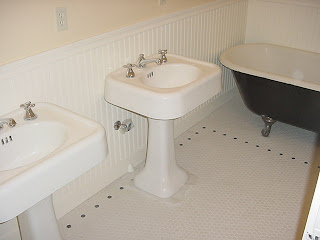
The intention of all my blogs and articles is twofold. First and foremost is to give the reader “permission” to think, choose, and be comfortable with their own decisions concerning purchase, placement, and installation of vintage lighting (or any other item) in their home. Secondly is to give the reader useful information.
Somehow an “only this way is correct” authoritative mentality seems to be the norm, freezing people from making their own decisions for fear of doing it wrong. We should be giving credence to our own unique preferences and each of us should be guided by our intuition and sense of style. The whole arts & crafts movement was based on individuals wanting choice from the mass-produced “this is what you need (want)” commercialism. We need to give this permission back to the individual. Art Deco can be beautifully combined with Arts & Crafts or Spanish Revival or Victorian. This is exactly what one would have seen in the common home of the early 20th Century. Sure, using a specific term to describe a specific item gives one the air of authority, but as the bumper sticker says: Question Authority. And not just the kind with a badge.
It is nice to learn what style our home is, but not to then be tied to whatever design is designated to that style. This was brought home in a recent blog I read where someone asked what color of white tile would be most appropriate in the 1" hex tile for a period bathroom. (Not what color of tile, but what color of white tile). This seemingly had stopped the homeowner from moving forward. I answered whatever shade of white you like, AND trust your decision. I recently completed a “period” bath using new 1" white hex floor tile. In the bath I also installed a vintage claw-foot tub, 2 vintage white pedestal sinks (from different manufacturers, 16 inches apart), 3 vintage white porcelain wall sconces and 2 antique white porcelain ceiling fixtures with milk glass shades. All of the colors of white were original, appropriate AND none of them exactly matched. The bathroom is fabulous.
Point being, there were a lot of choices back then, as now, and any of them would be a correct choice.
Listen to Your Eyes. PB


.JPG)


.JPG)









.JPG)

